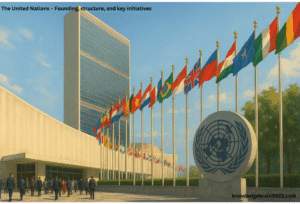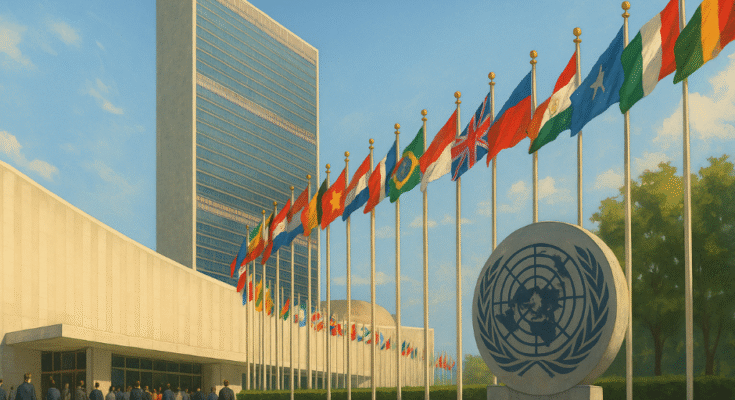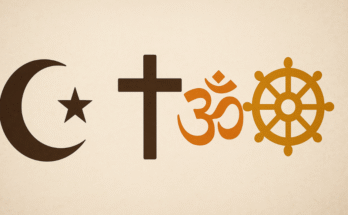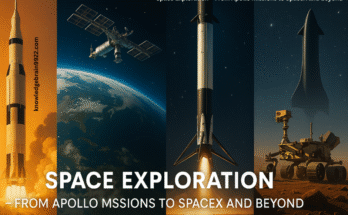
The history, Organization, and principal projects of the United Nations Overview The United Nations (UN) is the largest international institution that is dedicated to improving the global co-operation, security and peace. The United Nations was created in the autumn 1945 during World War II. The initial time, it was comprised of fifty-one members, and today it is home to 193 states. The UN makes use of its multilateral framework to deal with issues that are transnational, such as the sustainable progress, human rights, as in humanitarian assistance and climate changes, as well as helping to prevent conflict and develop international standards. In this piece, we’ll look at the basic foundations that govern the UN, the structure and organization of its organisation, and its most important projects which impact its influence across the globe.
Historical Context and Establishment
The League of Nations’ shortcomings
The League of Nations, which was established at the start during World War I with the aim of maintaining peace, was not able to end the conflict that began World War II because it was not equipped to enforce its regulations or the the support of large nations. The UN was established based on the lessons from the mistakes made by the previous administrations, with an eye to.
Wartime Planning and the Atlantic Charter
U.S. president Franklin D. Roosevelt as along with British President Franklin D. Roosevelt and British Premier Winston Churchill launched the Atlantic Charter in the month of August 1941. It laid the groundwork of an organization post-war which was dedicated to autonomy as well as security. Ideas like that of a Permanent Security Council and a general meeting of all its members further evolved during subsequent meetings in Moscow (1943), Tehran (1943) in addition to Yalta (1945).
The United Nations Charter and the San Francisco Conference
A group of 50 countries gathered at San Francisco from April to June 1945 in order to draft the UN Charter. Leaders from the to-be Allied nations signed the document on June 26, 1945. It outlined the essential principles of human rights, sovereignty and non-aggression. On the 24th day of October 1945, and now honored under the title of UN Day every year, the Charter became effective.
Principles and Objectives of the Charter
The four main goals are set out in the UN Charter:
Security and peace around the globe by employing methods that include mediation and amicable conflicts, efforts to prevent and end dangers, and also legal actions which have received approval by Security Council members. Security Council.
Create a more pleasant relation between nations, by protecting the rights of each nation to decide their own fate and the an equality of rights.
To resolve questions of economic, cultural or human rights and to advance the rights of humans. international cooperation is essential to be achieved.
serves to act as a hub, which coordinates the efforts of all nations to accomplish common goals.
Sovereignty and Membership
“Peace-loving states” who recognize the responsibilities of the Charter and possess the capability and desire to meet these obligations, can join the UN. Whatever their size or status, states have one vote in the General Assembly due to sovereign equality. Even though the membership may be suspended, just few states been banned or disqualified (such like South Africa during apartheid or the Axis strength after World War II).
The Six Main Organs
The Charter created six major organizations to carry out the duties that UN: UN:
- 1. The 193 elected members constitute the General Assembly (GA).
The role of the Council is the discussion and recommendation of the resolution of global problems, reviewing the UN budget and appointing permanent members to the Security Council, appointing the Secretary-General based upon recommendations from the Security council and hearing reports from different agencies.
A simple majority is needed for most major decision. But, it’s suggested to obtain at least a two-thirds majority on “important questions” including membership in addition to budget and peace.
- Security Council (SC) 15 members, all of whom two-year term terms are voted for. Five are permanently elected (China, France, Russia along with The United Kingdom, and the United States) with veto the right to vote.
The main responsibility is making sure that peace is maintained throughout the globe and security. It can approve military operations and also the imposition of sanctions. The council can also authorize peacekeeping operations.
Methods for Working The minimum amount of voting is 9. Nine votes will be given to the procedure decision in addition, each of the five permanent members is needed to back fundamental ones (i.e. the decision is not vetoed). ).
- The members from the Economic and Social Council (ECOSOC) are elected for a term of three years.
The mission of UNICEF is to facilitate worldwide cooperation in the area of human rights, education as well as health, and to promote the growth of nations through coordination economic and social activities of special commissions and groups (such for instance WHO, UNICEF, and UNESCO).
- Secretary-General The Secretary General is elected from the General Assembly on the proposal of the Security Council and serving five-year renewing terms.
The job entails conducting research, publishes reports, decides and offers administrative support. Nairobi, Geneva, Vienna as well as New York (the headquarters) are among the office locations.
- The Hague, Netherlands is home to The Hague, Netherlands is home to the International Court of Justice (ICJ).
comprised of fifteen judges. They were chosen to serve nine years through the Security Council and General Assembly.
The primary purpose of this organ is that it acts as a judge, who gives advice on legal matters which are handled by authorized UN organisations or institutions, and decides on any dispute which are filed by government.
- 6. The Trusteeship Council was established to supervise the transition from trust property into self-governing.
Status: At the time that the trust zone that was in place (Palau) was made an independent zone, operations were halted in the year 1994.
Specialised Organisations and Associated Groups
The six major institutions that comprise the UN system don’t have to include:
The World Health Organisation, International Monetary Fund, World Bank, International Labour Organisation, and UNESCO are but a handful of examples of institutions with special functions that function independently and are managed by agreements with the UN.
UNICEF, UNDP (Development), UNHCR (Refugees), OCHA (Humanitarian Affairs), UN Women, and numerous other organizations that concentrate on the requirements of theme areas or regions are included among the funders as in programmes.
Regional Commissions: Economic and Social Commission for Asia and the Pacific (ESCAP), Economic Commission for Latin America and the Caribbean (ECLAC), Economic Commission for Africa (UNECA), Economic Commission for Europe (UNECE), and Economic and Social Commission for Western Asia (ESCWA).
Important Projects and Activities
- Peacebuilding and Peacekeeping
The United Nations has sent multifaceted peacekeeping mission to areas of conflict (such such as Congo, Cyprus, Cambodia and Sierra Leone) since the initial missions from 1948 (UNTSO in Palestine). Monitoring ceasefires, securing civilians, disarming militants as well as assisting in the process of preparing for elections are the main objectives of over 70 missions. Commissions on peacebuilding concentrate on reconciliation, institution-building, and post-conflict recovery.
- Goals for Sustainable Development (SDGs)
The 2030 Agenda, which was adopted in 2015, has 17 goals. Of which include Sustainable Development Goals (SDGs) which cover topics such as preservation of the environment, climate change gender equality, sustainability of clean energy Healthy cities, education and healthy cities in reducing poverty as well as International cooperation. The UNDP along with other international organizations assist in the process of implementing either at the regional or national scale. Furthermore there is the UN High-Level Political Forum evaluates the progress made every year.
- Framework for Human Rights
Rights essential to economic, civil and political rights as well as both cultural and social rights are protected in 1948’s Universal Declaration of Human Rights and the subsequent Covenants. With the aid by the Universal Periodic Review, special reporters and treaty organisations The Human Rights Council, that was created by the defunct Commission on Human Rights in 2006, which was responsible for monitoring human rights violations. States get assistance from OHCHR. The Office of the Human Rights Office of the Commissioner to Human Rights (OHCHR) for development of capacity and for implementation.
- Protection of Refugees and Humanitarian Aid
OCHA mobilizes non-governmental groups and corporations, to support the global crisis response to natural or related disasters and conflict. The UNHCR is accountable for securing refugees and internally displaced individuals, and seeking permanent solutions that include relocate, integration into the local community or relocating to their homes on a voluntary basis. Many important solutions are provided by different organizations, including UNICEF (child security) in addition to WFP (food aid).
- Preparedness for Health and Pandemics
WHO oversees the immunisation efforts (e.g. the smallpox vaccine or polio elimination) and also monitors epidemics of illness and creates the global regulations for health. To coordinate actions for the entire health system and to coordinate response, the WHO’s Global Health Cluster brings together with other partners as well as UN organisations. It is essential to have an effective global surveillance system in as well as the accessibility of treatment, diagnosis and vaccines (such for instance, the COVAX) COVAX facility) was highlighted in COVID-19.
- Environmental Action and Climate Change
Treaties, like the ones in Treaties, such as those of the Paris Agreement and Kyoto Protocol were concluded by the signatories of the UN Framework Convention on Climate Change (UNFCCC). The UN Environment Programme it is also UNEP that UN Environment Programme (UNEP) assists in establishing policies on the security of chemicals as well as biodiversity and oceans. They also manage ecological assessments as well as campaigns for to ensure the sustainability of natural resources.
- Non-Proliferation and Disarmament
Treaties to limit the use of weaponry are recognized by The United Nations, including the Arms Trade Treaty (ATT) as well as the Chemical Weapons Convention (CWC) as well as the Biological Weapons Convention (BWC) and the Treaty on the Non-Proliferation of Nuclear Weapons (NPT). A third important venue for negotiations could be the Geneva Conference on Disarmament. Geneva Conference on Disarmament.
Budgeting and Finances
The UN regular budget (peacekeeping distinct) is calculated using member’s contributions to the state in relation to the GDP (ability to pay) and dependent on changes related to the per capita income as well as the debt burden. Trust funds and other special organisations are financed by donations from people. The aim of efficiency assessments and the transparent financial transactions to help improve the management of funds.
Remarks and Demands for Change
The UN is a target of criticism:
Security Council Vetoes When permanent members use their veto powers to block any actions that are triggered by an emergency, they pose questions regarding the legality and fairness of their decisions.
Efficiency and bureaucracy These calls for streamlined processes are driven by the belief of repetition in delays when making decisions along with administrative costs.
Voices and representatives The developing countries would like to influence how decisions are made specifically in managing finances and managing.
Peacekeeping Challenges Mission rules of engagement, mandates and issues have led to inconsistent results, in addition to claims of violation.
The proposals for reform include increasing the number of permanent members within the Security Council, changing the power of veto as well as the increase of GA powers, as well as strengthening the processes to manage the UN procedure.
Looking Ahead: Difficulties and Possibilities
The UN is continuing to adapt to a rapidly changing world:
Great Power Competition and Multipolarity The management of conflict between superpowers while preserving the unity.
Digital Governance Using multilateral collaboration to address privacy concerns Cyber security, and the ethical issues associated with AI.
Global Health Security: Based on the lessons learnt in the aftermath of the pandemic to strengthen WHO in addition to the health system in general.
Climate Crisis: Expansion of damage-reduction processes, transfer of technology and financing to help in mitigation and adaptation.
The participation of non-state actors to the process of decision-making including municipalities, communities of indigenous peoples corporations organizations, young people, etc. is frequently referred to in the context of multilateralism that is inclusive.
In the end
It is believed that the United Nations is still the leading platform in the world for countries to talk, debate and collaborate with respect to trans-border issues for more than 70 years after it was established. Peace, human rights and development are all supported through the UN’s capabilities operational and normative frameworks in spite of the constant structural and political issues. The principals of collaboration and teamwork at the United Nations give the greatest possibility of a safe, sustainable and fair future in the face of new dangers like the spread of pandemics and climate change.



